DIY Doctor has received many questions about securing homes and gardens, including protecting tools, sheds, bikes, lawn mowers, and even vehicles.
With home and garden theft on the rise, we’ve heard reports of thieves using wheelbarrows to steal lawnmowers and patio heaters. Security can be challenging, as criminals become more resourceful, and there are countless lock options available.
This guide explores the top security options to help keep your property and garden safe from theft.
General Burglar-Proofing Tips
Aside from the measures that we run through below there are some general tips that you can follow in order to make your garden and outdoor areas as unappealing to any would be burglars as possible, these are as follows:
Garden Boundary
Make the boundary around your home and garden as secure as possible by installing hedges, fences or the similar, but bear in mind that planning permission may need to be sought for such objects if they are taller than 2m.
Also, planting thorny climbers and shrubs such as roses against fences and walls can deter anyone from attempting access.
However, avoid installing products such as barbed or razor wire that can cause serious injury and in the event that an intruder does get badly injured, they can then even sue the home owner!
Due to the fact that hedges and the likes do take quite a while to grow into a suitable defensive barrier, quite often a fence is also installed to act as an immediate barrier until such a time the hedge takes over at which point it can then be removed.
Paths and Driveways
Keep paths and driveways as clean and unobscured as possible so that you can clearly see anyone that is attempting to access your property can be clearly seen and identified, not only by you, but also any CCTV or surveillance equipment you may have.
Also, lining paths and driveways with gravel will ensure that anyone walking on such a surface isn’t allowed to do it quietly and will inevitably make enough noise as to alert the occupants.
Gates and Access
Any gates or access points into your property should remain locked at all times when not in use, especially those at the property rear or those that are obscured from view.
When installing gates, ensure that 2 bolts are installed, one top and one bottom and that hinges are secured correctly and in such a way that it prevents anyone from lifting the gate physically off the hinges.
Options for Garden and Outdoor Security
There are a great many products available today for securing outdoor objects and areas and these range quite widely in terms of installation ease and effectiveness so here is a run down on the most common of these products and how they should be used.
CCTV and Video Surveillance
Securing your home and garden is, as we have mentioned, a great and necessary thing to do, and certainly one of the best and comprehensive security measures is to install a CCTV system.
Buying CCTV is, historically for the layman a potentially confusing minefield with many options and most at quite an expense. However worry not as today this process has been made much simpler with the advancements in surveillance technology and emergence of companies such as Vertisure and SimpliSafe.
Both of these companies and many others like them have utilised the massive advances in WIFI technology to create a system that can be installed wirelessly which in itself takes away a massive chunk of the work itself, meaning that they can be installed quite easily on a DIY basis.
For those looking for maybe a more comprehensive system, most traditional security companies have also adapted their systems to make them much cheaper and easier to install.
Additionally, most security companies out there are happy to talk you through the situation you have and provide help on choosing the best security equipment for you. It may be, as it is in a lot of domestic cases, that all you need is an external camera.
Another huge advantage with today’s modern systems is that all footage can be recorded both onsite via SD cards and the likes and also offsite (for an additional monthly charge) and then simply streamed over the internet to view via an app meaning that it can be accessed pretty much anywhere with an internet connection.
CCTV today is the cheapest and not accessible it has ever been and if you are looking for both a security system and deterrent, then this really is the whole package.
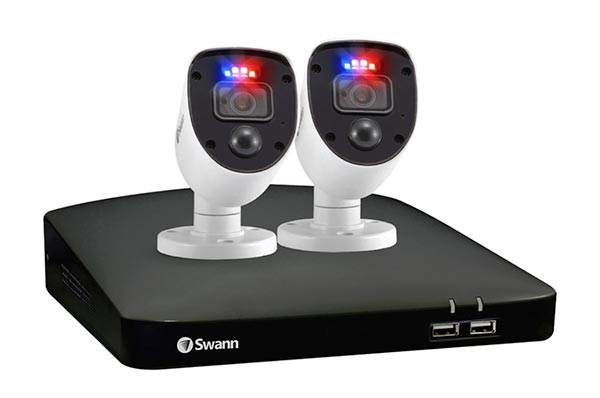
Basic wifi cctv system
PIR Lighting
PIR lighting, or Passive Infrared lighting, is a popular choice for home and property security. It uses sensors to detect infrared energy, typically emitted by people, animals, and moving objects and once sensed, trigger a light to turn on automatically.
This type of lighting is commonly used outdoors in areas like driveways, gardens, and pathways to deter intruders, illuminate dark spaces, and improve the overall safety and security of a garden or outdoor space.
PIR lighting works by using a passive infrared sensor to detect heat signatures within its range. When the sensor detects motion from a warm object, such as a person or animal, it sends a signal to activate the light. Unlike traditional motion lights, PIR lights only react to heat, which reduces false triggers from moving trees or passing vehicles. Once activated, the light typically stays on for a pre-set duration, then automatically turns off until further movement is detected.
One of the major benefits of PIR lighting is that the lights themselves are extremely cheap these days, costing as little as £20 for a decent quality LED light and they are also very effective deterrents for any potential opportunist thief.
Also, due to the fact that pretty much all options these days are LED, they are also very energy efficient.
As most are also now solar powered there is no needful any form of electrical installation, meaning that thy are an easy DIY install.
Many PIR lights offer adjustable sensitivity settings, so you can customise their range based on your specific needs.
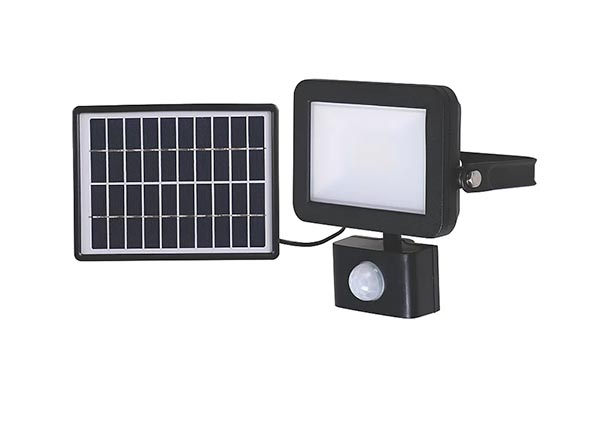
External solar PIR light
Shed Security and Locks
One of the most “at risk” areas of anyones garden is the shed (if you have one) as they are often full of a range of valuable items such as garden tools, mowers, strimmers, kids bikes etc. which makes them an automatic first choice target for thieves, so sheds always warrant special attention when it comes to security.
As a very minimum, any garden shed or similar outbuilding should be fitted with a hasp and staple lock upgrade on what’s originally supplied with the shed, to which a good quality, heavy-duty external padlock should then be fitted to secure it.
If it looks like it’s going to require effort to get into, this might be enough of a deterrent to put any potential burglars off having a go.
Pretty much all sheds have windows and stock tis is either a single pane of glass or perspex and neither will put up too much of a fight.
To increase their security, consider covering them internally or externally with some form of wire mesh or similar, ensuring any bolts/screws etc and on the inside so they cannot be simply unscrewed outside.
Another great idea is to fit a good quality shed alarm. These are similar to a traditional house alarm only a little smaller but can still kick out plenty of noise to alert you or your neighbours.
Another handy security upgrade is to fit a door bar or shed lock bar as they are also known. These handy security devices are basically a large bar that is fitted between 2 hasps across the door externally and is then secured one end with a padlock.
Not only do they make a shed door virtually impossible to get open but due to their imposing appearance, they’re an immediate deterrent for any burglar!
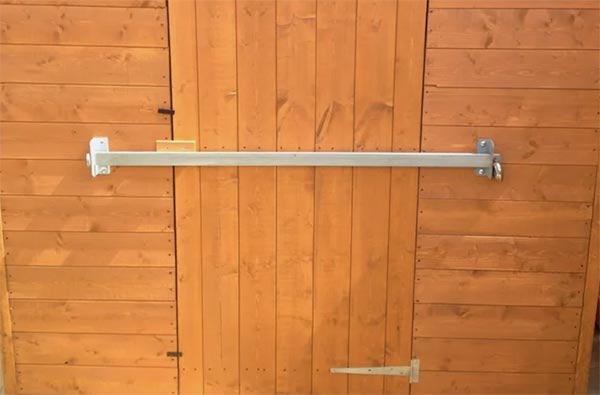
Garden shed door lock bar
Securing Bikes and Mowers
In the event that any would-be thieves do actually penetrate your shed defences it’s a great idea to further hinder their progress by securing any individual items in the shed or outbuilding and this is often best done by chaining them together and then securing the chain to a fixed object such as the shed or outbuilding itself, a concrete floor pad, stake hammered into the ground or something similar.
Often, mistakes are made by simply chaining small items together than can be easily picked up and removed and then the thieves remove the chain/lock later.
A great item to use here is a ground anchor, there are many variants available that can be seen via a simple Google search to suit any situation.
They provide a solid secure fixing for any item or group of items to be chained to, preventing them from being moved.
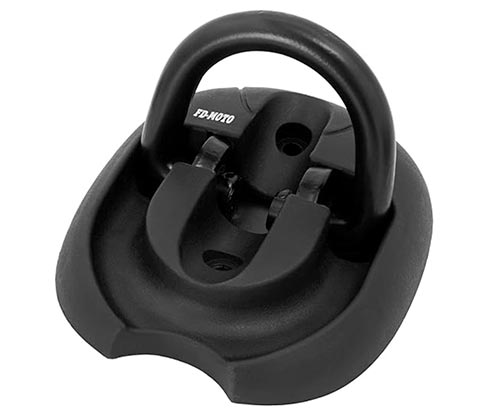
Security ground anchor
Lock Boxes
Another great idea is to add a lockable box in your shed as it is an effective way to secure smaller items that can’t be chained to a ground anchor, like screwdrivers, nail bars and even drills and drivers.
Storing these tools safely helps prevent them from being used by thieves to dismantle other security measures or aid them breaking into your home.
As there are many different sizes of lock box it’s also possible to get them large enough to place in the garden and store bikes, garden furniture and other similar objects. You may be familiar with these as many of this size are made of reinforced plastic or metal.
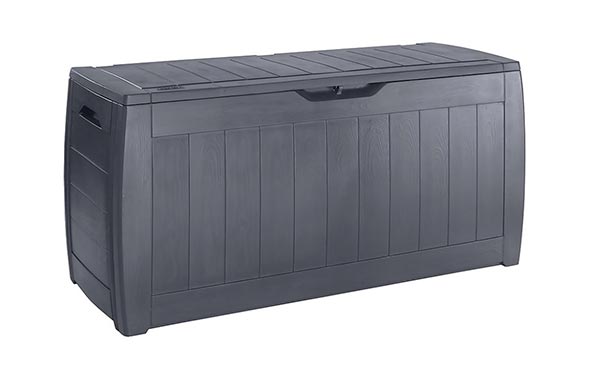
Large plastic garden lock box
Securing Caravans and Trailers
Another hot target for thieves that can sometimes go overlooked are trailers and caravans. Although these are seemingly large objects that may appear to be too much hassle to attempt to steel, they are often worth a lot of money and therefore a tempting target.
On the market today there is a range of many items geared towards securing such items and these usually come in the form of hitch and wheel locks.
Both provide an effective means of security, with the hitch lock being fitted to the ball hitch, preventing it being hitch up to a vehicle and the wheel lock being fitted over one of more wheels to act as a clamp and prevent it from turning.
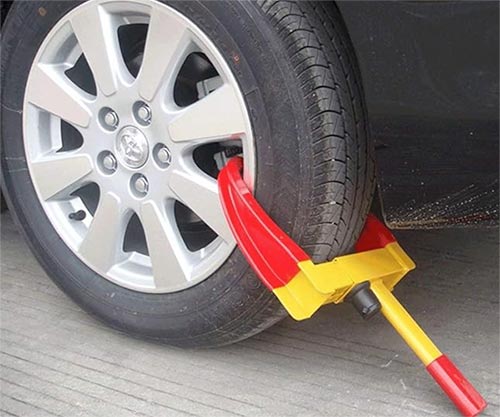
Caravan or trailer wheel clamp
Having the Right Home Insurance
Another item that often gets overlooked is what home insurance you have and more importantly, whether it features enough cover to ensure that any and all items you have in your garden are actually covered.
With most stock home insurance policies, they will come with only a set amount of cover for external items such as garden seating, garden tools, kids bikes and play equipment and the likes. They will often also exclude very expensive specialist items.
So, with this in mind, it’s well worth referring to your home insurance policy to see what level of cover it gives, often it will state something similar to “total amount of cover for garden items: £5000”, or something like that, meaning it will cover items in your garden up to the total value of £5000.
If you know that you have items that far exceed this total cover amount you will need to get in touch with tour insurer and have them arrange special cover to be added to your policy for such items.
As you can see from the above, garden and shed security, although often overlooked, is something that you should definitely pay close attention to. We hope this project has given you a little insight into these problems and hope it helps you to keep your garden items safe.

